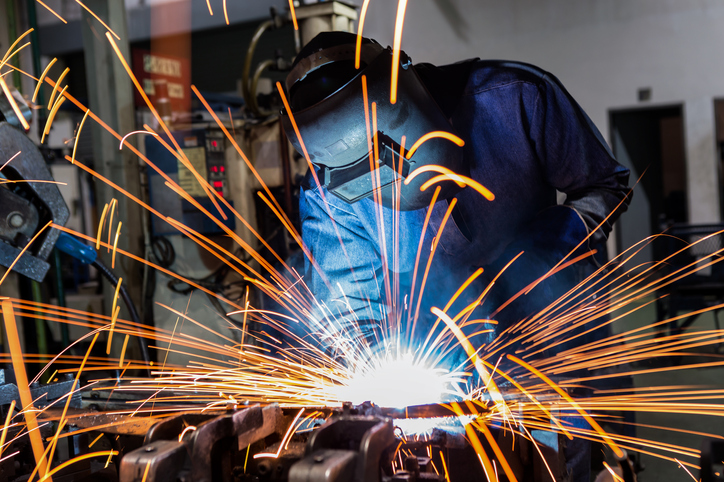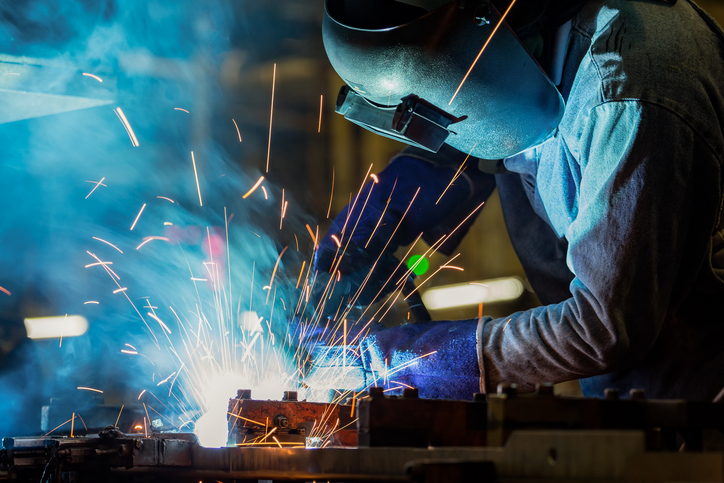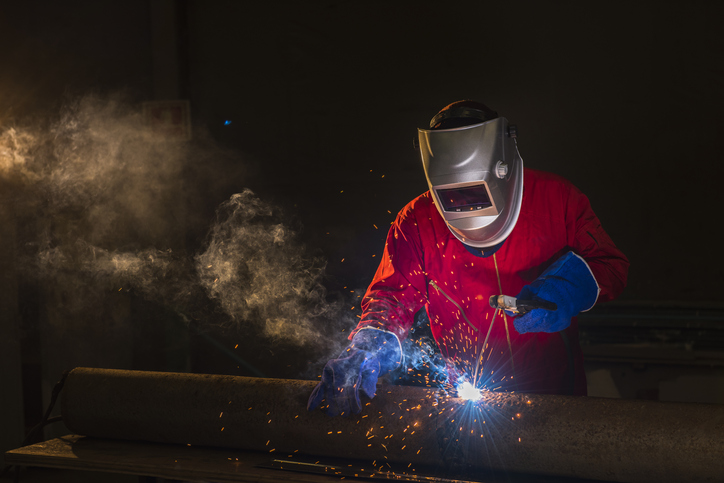
In a welding project, arc-on time has a direct effect on the number of parts completed during manufacturing operations. However, what many manufacturers don’t realize is that the average arc-on time is typically 10% to 12% of the welding process. Increasing arc-on time can result in improved productivity and cost savings, and thus, welding professionals should make boosting this metric a priority. There are many factors that contribute to improved arc-on time, and in order to see results, the entire welding process must be considered.
If you’re training for a career as a welder, here are three ways to increase arc-on time during a welding project.
1. If You’re in a Welding Career, Increase Arc-On Time By Choosing the Right Welding Process
If you’re having trouble increasing your arc-on time, start by analyzing the welding process you’re using. Making a change to the process can result in improved efficiency and increased arc-on time, but many manufacturers are hesitant to make this change due to the reapproval and further training necessary to switch processes. Options for welding processes include standard GMAW (gas metal arc welding), modified short-circuit GMAW, or a pulsed GMAW process. Switching from a standard to a pulsed process can result in benefits such as increased travel speeds, lower heat input, and reduced amounts of spatter, contributing to increased arc-on time.

Professionals in a welding career can also make changes to their process by utilizing metal-cored or flux-cored wires instead of a solid wire, which is conventionally used in GMAW applications. Depending on the materials being welded, a metal-cored wire can result in faster travel speeds to boost arc-on time. Welders may also utilize different shielding gases to improve the productivity of their process. Most manufacturing operations utilize 100% carbon dioxide shielding gas, but substituting a mixed gas, such as one composed of 90% argon and 10% carbon dioxide, can produce fewer spatters and faster travel speeds. This allows welders to spend less time on post-weld grinding—increasing arc-on time.
2. Welders Can Check Their Parameters and Consumables to Increase Arc-On Time
Arc-on time can be negatively impacted by inaccurate parameters and faulty consumables–factors which not only increase inefficiency, but are preventable. When welding professionals check that their parameters are correctly inputted before beginning the welding procedure, they can reduce the chances of having to solve issues through rework or spending excess time on post-weld cleanup. Professionals can check parameters such as heat input, travel speed, and wire stick-out. With the right travel speed heat will be controlled, reducing spatter and optimizing penetration. Additionally, if too much wire is sticking out, there will be excessive spatter, requiring more rework and extra post-weld cleanup.

Before beginning the welding process, those in welding technician training can also ensure that their consumable connections are properly adjusted and correctly installed. Welding professionals can check for loose connections or worn weld cables to prevent a poor quality welding job or increased spatter. If the quality of these connections is confirmed beforehand, troubleshooting time can be reduced.
3. Take Advantage of Technology to Increase Arc-On Time
Advances in technology offer many advantages to welders looking to improve their arc-on time and increase efficiency. Technology is being increasingly used to improve welding power sources–making welding machines more accurate and easier to use. Some welding power sources today feature synergetic control, which allows them to automatically make changes in accordance with the operator’s adjustments. This also allows the operator to increase their arc-on time without worrying about parameters. Today, welding systems also offer a simplified machine setup–reducing the time welders spend setting up by adjusting other parameters according to the material thickness. These technologies improve accuracy, reducing spatter and post-weld cleaning to optimize arc-on time.
While these three factors contribute to increased arc-on time, those interested in entering a career in welding can also increase their arc-on time by receiving the proper training. Students at the North American Trade Schools’ (NATS) welding program benefit from hands-on training to prepare for a welding career. For welding graduate Emily Harrison, her “favourite thing about [NATS] was the knowledge of the teachers and how much practical work you were able to do.” With training from NATS, you’ll be equipped to identify ways in which arc-on time can be increased throughout your welding career.
Are you interested in taking welding courses?
The North American Trade Schools’ welding program can launch your career—learn more today!





